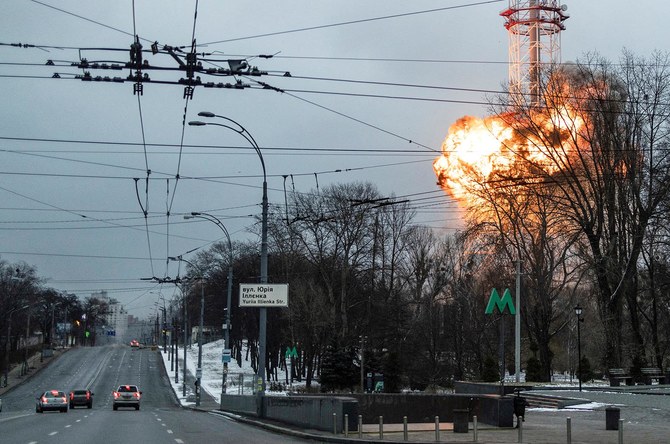Militant conflicts can be used to wage war on both the environment and the people.

Scorched earth can be used in warfare for many different purposes. The larger scope of military operations raises concerns about the effects conflict can have on the environment, and the spaces that people live in. These can be subject to severe damage.
Military activity can lead to water contamination and land devastation. The effects can last decades, including toxicity due to chemicals, gas, and other pollutants. These environmental factors can also impact food security and supply.
Combat operations are bound to cause environmental damage wherever they take place. Historical research has shown that even in ancient times, the massing and destruction of armies turned the battlefield into mud. The environmental impact of military operations has been dramatically increased by modern warfare techniques and weaponry’s destructive power.
The environment is being impacted by increased population, intensive extraction and misuse of natural resources, and the systematic destruction and fragmentation habitats as a consequence of urbanization, agriculture and mechanized land clearing.
Dozens upon dozens of ongoing conflicts are causing harm to the ecosystems around the globe. If properly trained, some forces understand how environmental factors affect military planning. It is crucial for a commander to understand the location of enemy fuel storage facilities in order to defeat an enemy force and seize its defensive position. They may be close to water sources that provide water for a large portion of the local population.
High-intensity conflict requires and consumes large amounts of fuel. This results in high levels of carbon dioxide emissions that contribute to climate change. Smoke from fires can also have harmful effects on the environment, and on civilians trapped between warring parties.
Large-scale vehicle movements, combined with the heavy use explosive ordnance, can cause significant physical damage to sensitive landscapes. Explosive weapons can also cause soil and air pollution by generating large amounts of debris and rubble in urban areas. Light industry and other environmentally sensitive infrastructure can also cause pollution, such as water treatment facilities.
The loss in energy supplies can have reverberating negative effects on the environment. For example, it can cause treatment plants or pumping stations to close down. It can also result in the use more polluting fuels, or domestic generators.
Other environmental considerations are also important in relation to conflicts. Large areas of land and water are essential for military forces to operate. This is true for both bases and facilities, as well as testing and training. The military is estimated to use between 1 and 6 percent of the world’s land. This land is often located in areas of ecologically significant importance. Protecting environmentally sensitive areas from development is good for biodiversity, but it is seldom discussed if they could be better managed by being protected areas. Military training can cause emissions and disruption of habitats on land and sea, as well chemical and noise pollution, due to the use weapons, aircraft, and vehicles.
In addition to the ongoing disposal costs of maintaining and renewing military materials and equipment, there are also implications for the environment. Environmental problems are not limited to the most dangerous arms, such as chemical and nuclear weapons. Problems can also be caused by conventional weapons, especially if they are open-burned or detonated. The practice of dumping large amounts of surplus munitions at sea has been a problem for centuries. This must be stopped.
Another problem is the lack of oversight over the environmental damage that military forces cause. Many countries are now facing serious environmental consequences from military pollution, which can have a devastating impact on public health and require huge amounts of money to fix. As new pollutants are discovered, such as forever chemicals, which take a long time to degrade, the challenges only increase.
High-intensity conflicts consume large amounts of fuel and result in high levels carbon dioxide emissions.
Dr. Theodore Karasik
The environmental legacy of military activity is also a problem around overseas bases. Here, one-sided agreements can reduce environmental oversight. It is important to consider the environmental effects of military activity when forming bilateral military relations. The military is not equipped to deal with the climate change predicted for 2030.
Conflicts and other activities that involve the military or armed group are polluting. It is important to have oversight, regulation, and penalties for violations. People and their security are affected by the environmental damage caused by an uprising or insurrection, terrorist attack, or combat.
Some armed conflicts may be short-lived but very destructive. While some civil wars can last for decades, they are often of low intensity. Modern conflicts blur these lines, lasting years but with sustained bursts high-intensity war. Environmental effects of disputes can be strongly affected by who is fighting, where and how they are fighting.
- Dr. Theodore Karasik is a senior adviser to Gulf State Analytics in Washington, D.C. Twitter: @tkarasik
Disclaimer: The views expressed by the writers in this section do not necessarily reflect Arab News’ point-of-view.

